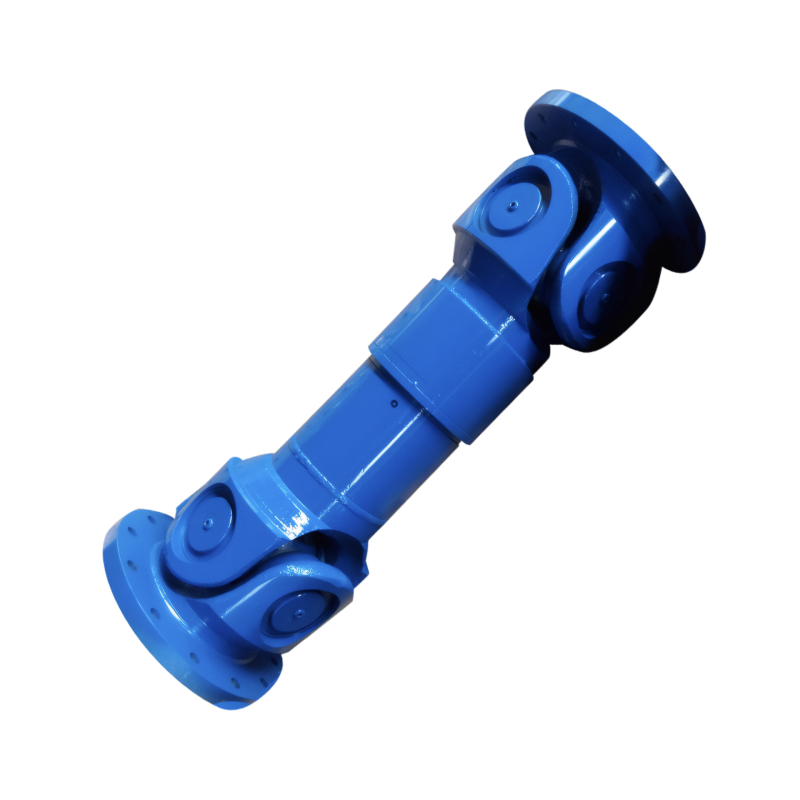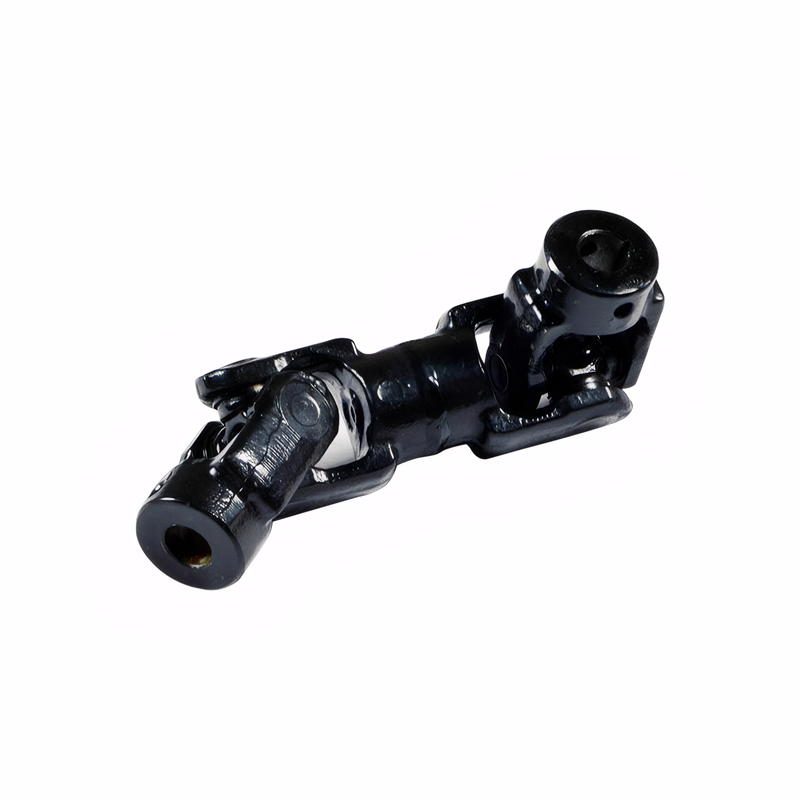The design of the fork-shaped joint of the transmission shaft
Design Considerations for Fork-Type Joints in Automotive Drive Shafts
Fork-type joints play a pivotal role in automotive drive shaft systems by enabling flexible power transmission between components with varying angular orientations. These joints must accommodate dynamic loads, thermal expansion, and misalignment while maintaining structural integrity. This analysis examines key design elements critical to their performance in automotive applications.
Structural Configuration and Component Integration
Geometric Optimization for Load Distribution
Modern fork-type joints employ asymmetric fork geometries to optimize stress distribution across the joint interface. The fork arms typically feature a 120° angular separation with reinforced root sections to resist bending moments generated during torque transmission. In heavy-duty truck applications, the fork width-to-depth ratio is maintained at 1.8:1 to prevent premature failure under high-torque conditions.
The joint housing incorporates a precision-machined bore with 0.02mm tolerance to ensure proper alignment with the drive shaft tube. Some designs integrate a self-centering mechanism using tapered roller bearings, which reduces radial runout to below 0.1mm during operation. This is particularly crucial for electric vehicle applications where high-speed rotation demands minimal vibrational imbalance.
Material Selection Criteria
High-strength alloy steels such as 40Cr and 42CrMo4 dominate automotive applications due to their balanced mechanical properties. These materials achieve a yield strength of 850-950 MPa after quenching and tempering, making them suitable for both passenger cars and commercial vehicles. For lightweight applications, aluminum alloy 6061-T6 is increasingly used in conjunction with steel inserts at critical stress points.
Advanced manufacturing techniques enable material optimization at microscopic levels. Forged components exhibit a 30% improvement in fatigue resistance compared to cast alternatives due to refined grain structures. Some premium designs incorporate laser-clad coatings on the fork tips, extending wear life by 400% under abrasive conditions.
Dynamic Performance Enhancement
Angular Misalignment Compensation
Fork-type joints must accommodate angular variations up to 25° without significant power loss. This is achieved through:
- Spherical Bearings: Integrated into the joint housing to maintain constant velocity transmission
- Preloaded Springs: Applied to the cross-axis pins to eliminate backlash during direction changes
- Polymer Liners: Installed between moving parts to reduce friction coefficients by 60%
In off-road vehicle applications, dual-offset fork designs allow for 40° articulation while maintaining 98% power transmission efficiency. These joints feature hardened steel pins with diameters ranging from 25-40mm depending on torque requirements.
Thermal Management Strategies
High-performance joints incorporate advanced cooling solutions to handle heat generated during continuous operation:
- Microchannel Cooling: Integrated into the joint housing to dissipate heat through engine coolant circulation
- Phase-Change Materials: Embedded in the fork structure to absorb thermal spikes during peak loads
- Ceramic Coatings: Applied to friction surfaces to reduce operating temperatures by 30°C
For electric vehicle applications, joints operating at 12,000 RPM utilize magnetic levitation bearings to eliminate friction-induced heating entirely. These designs maintain stable operating temperatures below 80°C even under sustained high-torque conditions.
Manufacturing Process Innovations
Precision Forging Techniques
Modern manufacturing employs closed-die forging with multi-axis hydraulic presses to achieve near-net shape components. This process reduces material waste by 45% compared to traditional machining methods while improving mechanical properties through work hardening. Key advancements include:
- Isothermal Forging: Maintains material temperature within ±15°C during forming to prevent microstructure degradation
- Computerized Control Systems: Adjust pressing parameters in real-time based on material flow analysis
- Post-Forging Heat Treatment: Achieves uniform hardness distribution across complex geometries
For high-volume production, progressive die stamping enables mass production of fork components with ±0.05mm dimensional accuracy. This method is particularly cost-effective for compact vehicle applications requiring annual production volumes exceeding 500,000 units.
Additive Manufacturing Applications
Selective laser melting (SLM) technology facilitates the production of topology-optimized fork joints with internal lattice structures. These designs reduce component weight by 35% while maintaining equivalent strength to solid counterparts. Aerospace-grade titanium alloys are being evaluated for premium vehicle applications, offering a 50% weight reduction compared to steel alternatives.
Hybrid manufacturing approaches combine additive and subtractive processes to create joints with functionally graded materials. The fork root area is built using high-strength steel powder, while the tips incorporate wear-resistant cobalt-chrome alloy. This targeted material allocation extends service life by 200% under severe operating conditions.
Reliability Engineering Approaches
Fatigue Life Prediction Models
Advanced simulation tools incorporate multiaxial fatigue criteria to predict component lifespan under real-world operating conditions. These models account for:
- Variable Amplitude Loading: Simulating 10-year service cycles in 48-hour computational runs
- Surface Finish Effects: Quantifying the impact of machining marks on crack initiation
- Corrosion-Fatigue Interaction: Evaluating synergistic effects in salt-spray environments
For commercial vehicle applications, joints are subjected to 10 million load cycles during validation testing to ensure 1 million-kilometer reliability. Accelerated life testing protocols have reduced development cycles by 60% while maintaining 99.9% confidence levels in predicted lifespans.
Maintenance Optimization Strategies
Smart joint designs incorporate embedded sensors to monitor:
- Vibration Spectra: Detecting early-stage bearing degradation through frequency analysis
- Temperature Gradients: Identifying lubrication breakdown before catastrophic failure
- Torque Fluctuations: Measuring power transmission efficiency in real-time
These systems enable predictive maintenance schedules that reduce unplanned downtime by 75%. In fleet operations, sensor data is transmitted via CAN bus to central monitoring stations, allowing for proactive component replacement during scheduled maintenance windows.
 The structure of the middle su
The structure of the middle su
 The connection method of the d
The connection method of the d
 The function of the splined sh
The function of the splined sh
 Check for deviation of the dri
Check for deviation of the dri

